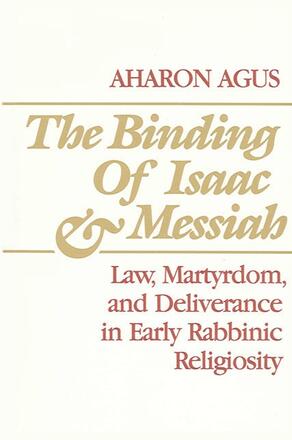
The Binding of Isaac and Messiah
Law, Martyrdom, and Deliverance in Early Rabbinic Religiosity
Alternative formats available from:
Description
The author provides an interpretation of the words of Jews living during the intertestamental period and through the third century, including several hassidim. A hermeneutics grounded in the perception of early Rabbinic texts as sharing in events rather than as linguistically autonomous is used.
The phenomenology of Jewish martyrdom is read as an acting-out of the Binding of Isaac. The search leads into the question of the bindingness of the La. The The religious soul's passion for the revelation of Law is followed out in its path of temptation to martyrdom. A grand drama of sacrifice and messianic yearnings is thereby unearthed.
Aharon (Ronald E.) Agus is lecturer on rabbinic thinking at Bar-Ilan University in Ramat-Gan, Israel.
Reviews
"There is a true struggling with the texts and perennial human issues. The author's treatment forces the reader to think about martyrdom and the larger complex of law, history, biography, and redemption differently from the conventional ways we have been 'taught' to conceive of these issues in general and within Judaism." — Steven D. Fraade, Yale University
"This is a very rich theme for the study of Judaism, and it is handled here with insight and sensitivity. The author's text analyses are perceptive and his command of the relevant Judaic sources encyclopedic. The text returns us to the religious point of early rabbinic literature and reminds us that the early rabbis were religious leaders trying to discover the religious meaning of their lives. Perhaps even more significant is that the book has the potential of reorienting the field. It is thought-provoking and enlightening, and the polarity on which the book is built keeps leading to new connections and unexpected associations." — Robert Goldenberg, SUNY, Stony Brook